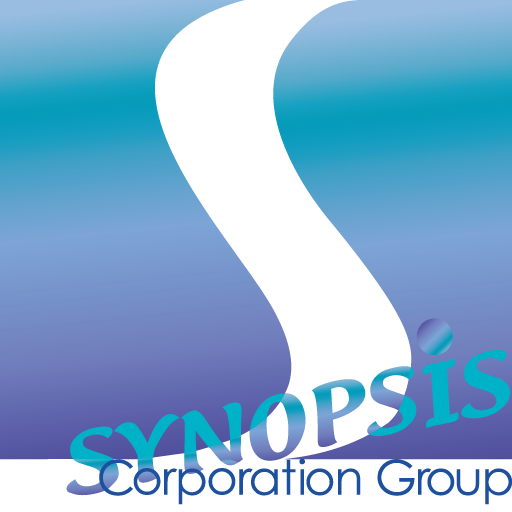Defense

ELECTRONIC WARFARE SYSTEMS (EWS)
SYNOPSIS Corporation Group’s Electronic Warfare Simulator (EWS) is a highly evolved architecture of software, high-speed digital processors, and RF assemblies used to simulate radar and other signals in complex military environments.
The EWS architecture is used to generate low-level RF signals for injection into electronic warfare surveillance receivers (receiver under test), including where applicable their multi-ports DF (Directional Finding) antenna systems.
EWS makes maximum use of DSP (Digital Signal Processor) and FPGA (Field Programmable Gate Array) technologies, which offer the re-programmability, modularity and expansibility suited for Research, Development, Test, Evaluation, and training environments.
Fundamental to the concept of EWS is the definition of RF emitters (radars, jammers …), and their relative location to the receiver under test. A comprehensive menu interface is provided to specify all of the externally observable attributes of an emitter, such as frequency, pulse width, repetition frequency, modulation on pulse, and antenna scanning effects. A database of emitters can be created and used to provide a specified set of emitters in a scenario, which is highly representative of an actual operational situation. One or more emitters can be assigned to any kind of platform, such as a ship, aircraft, missile, UAV….
Any number of such platforms can be introduced into a scenario of unlimited duration and geographical extent. The platforms with their associated emitters can be moved realistically in the playing area, as can the special platform “own ship”, which conceptually carries the receiver under test. The relative geometry between all platforms and the receiver is continuously computed in real-time to determine if the emitters on board are visible to the receiver. A computer display of platform position and elevation is continuously available. The appropriate signal strength and other environmental effects are then calculated to determine the characteristics of each signal at the receiver position. These effects are generated in real-time via RF’s synthesizers and DOA (Direction Of Arrival) or ABFU (Antenna Beam Forming Unit) modules.
The main functions of the EWS are :
- Generation of dense and complex electromagnetic dynamic environment in RF
- Capability of updating parameters and operation modes according to different scenarios for ESM / RWR /ELINT tests.
- Providing real-time simulation as close as possible to the real electromagnetic environment.
- Constituting a closed-loop simulation of Radar-Jammer-Radar to test the effectiveness of the ECM under test : Polarization modelling, Atmospheric propagation modelling, masking/multipath due to environment…
- Conducting statistics and analysis toward the results of repeated tests to get the quantitative analysis and evaluation.
Telecom

Based on arbitrary broadband and complex waveform generation technologies, our COMINT (COMmunications INTelligence) simulations, especially convenient for taking into account antenna network, are adapted to the following applications:
- Goniometry calibration test set
- Battlefield communication simulation
- COMINT receiver test
Automotive

Advanced driver assistance systems (ADAS) are systems developed to automate/adapt/enhance vehicle systems for safety and better driving. Safety features are designed to avoid collisions and accidents by offering technologies that alert the driver to potential problems or to avoid collisions by implementing safeguards and taking over control of the vehicle. Adaptive features may automate lighting, provide adaptive cruise control, automate braking, incorporate GPS/traffic warnings, connect to smartphones, alert the driver to other cars or dangers, keep the driver in the correct lane, or show what is in blind spots.
Autonomous cars can detect their surroundings using a variety of techniques such as radar. Advanced control systems interpret sensory information to identify appropriate navigation paths, as well as obstacles and relevant signage. Among the potential benefits of autonomous cars is a significant reduction in traffic collisions; the resulting injuries; and related costs, including a lower need for insurance. Among the main obstacles and disadvantages due to widespread adoption of autonomous vehicles, in addition to the technological challenges, are disputes concerning liability; the time period needed to turn an existing stock of vehicles from non-autonomous to autonomous; resistance by individuals to forfeit control of their cars; consumer concern about the safety of driverless cars; implementation of legal framework and establishment of government regulations for self-driving cars; risk of loss of privacy and security concerns, such as hackers or terrorism…
To predict certainty in the performance of driverless vehicles, and to ensure safety, automotive companies will have to extend their use of simulation technologies and embrace new ones such as stimulation of real sensor in HIL testing solutions.
The main objectives of radar simulation related to ADAS Systems are:
- Assessing the performance of radar sensors in their operational environment
- Assessing the performance of radar sensors in various types of environment
- Assessing the performance of radar sensors in various types of weather conditions
- Assessing the performance of radar sensors on various types of platform
- Replacing expensive, non-flexible and long trials (the usual one million kilometres qualification tests) by cost-effective and flexible simulation.
Technical challenges to be faced in radar sensor simulations:
- Carrier frequency is high: typically, in the mm waveband for radar sensors on vehicles (around 77GHz)
- Illumination of the scene can be very large due to small antenna size
- Radar data rate can be very high: typically, up to some kHz
- For some radar functions, such as Doppler (speed) measurements and angular measurements (subject to Glint effect), RCS is not sufficient
Most of the time, coupling (by multiple bounces) between the target and its close environment cannot be neglected.
Combined with a comprehensive software suite dedicated to automotive simulation and a high-fidelity RF scene rendering such as SE-Workbench-RF from OKTAL-SE, the RTS solutions of SYNOPSIS Corporation group are adapted to automotive radar testing in HIL mode. Indeed, our solutions already address radar systems in the W band such as missile seeker. So, our technological bricks are relevant for RF echoes generation at 77GHz, including FMCW type of waveform.
Synopsis Corporation Group has a cooperation with AVSimulation for creating HIL test solutions dedicated to automotive radars.

